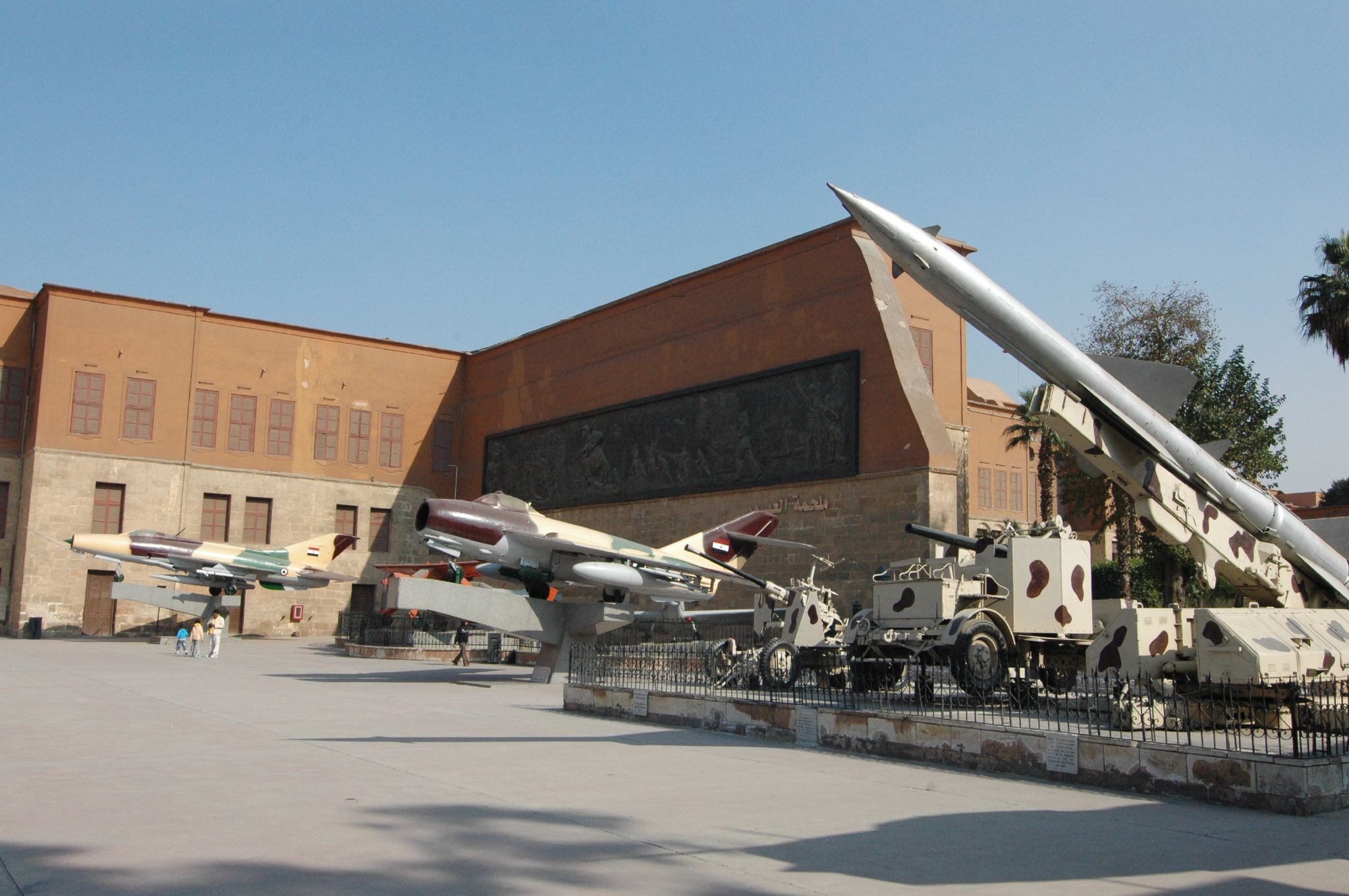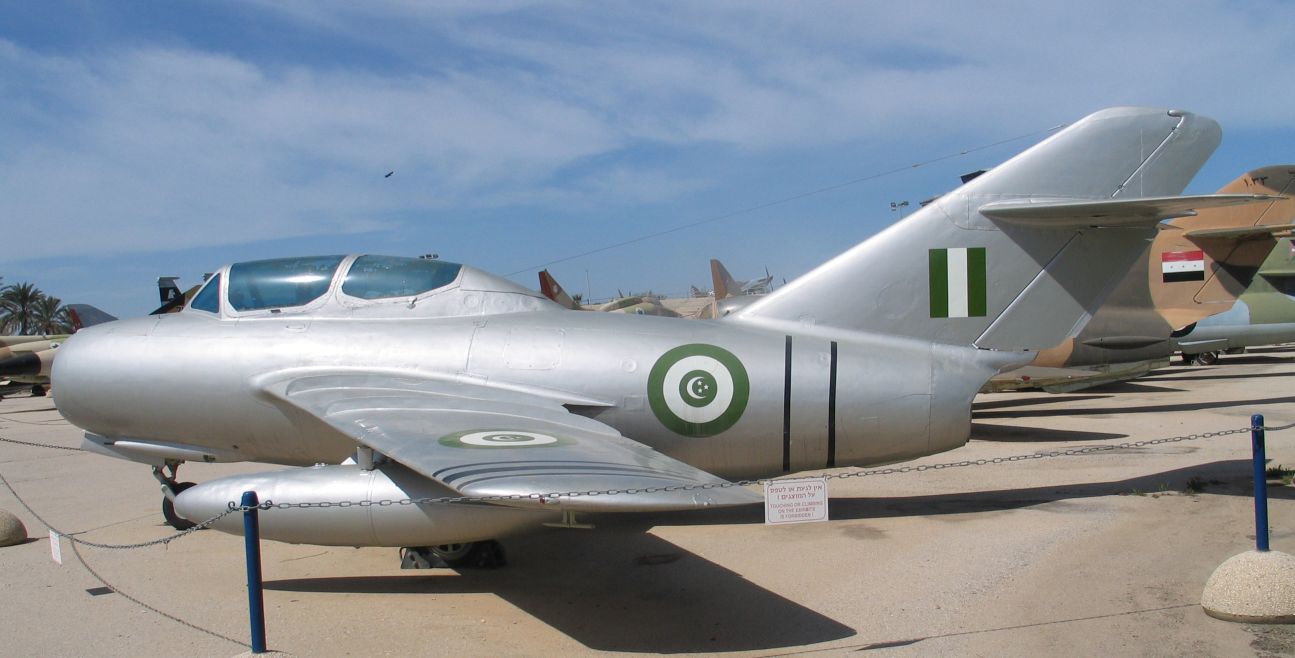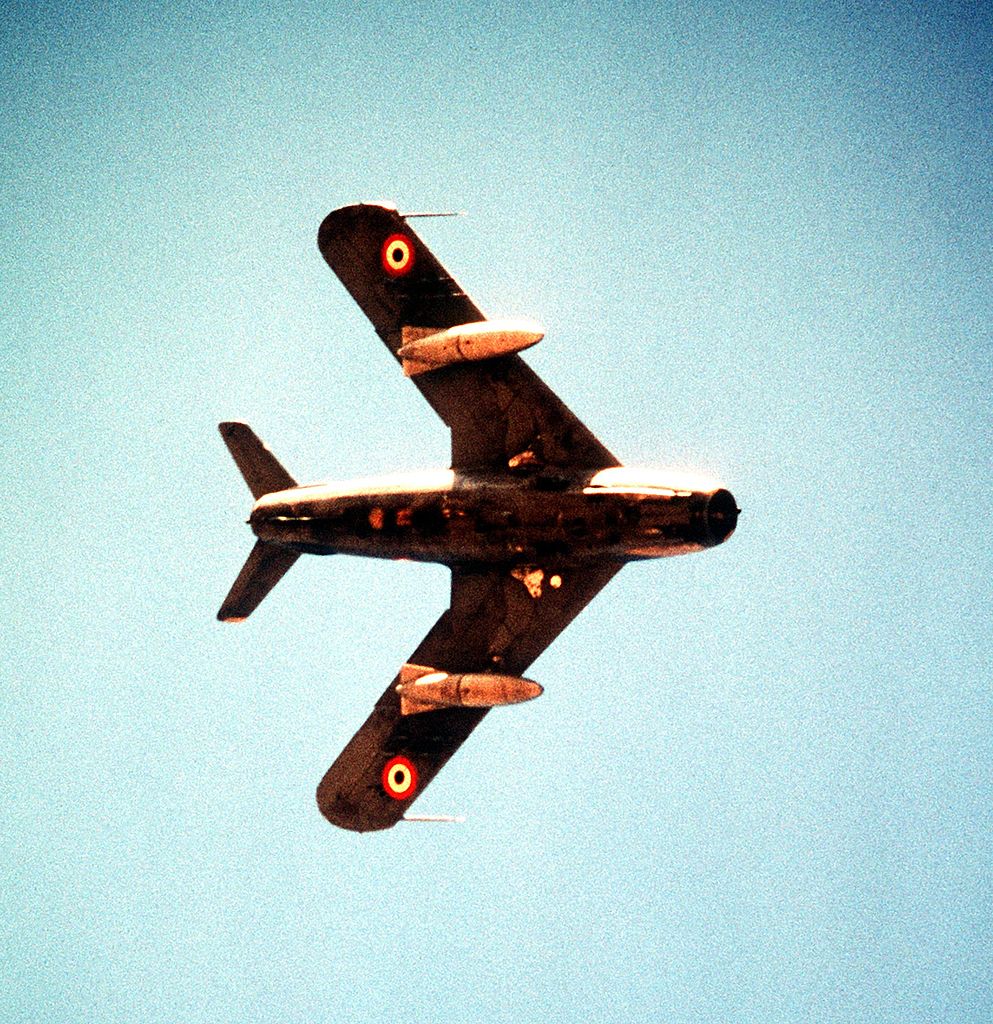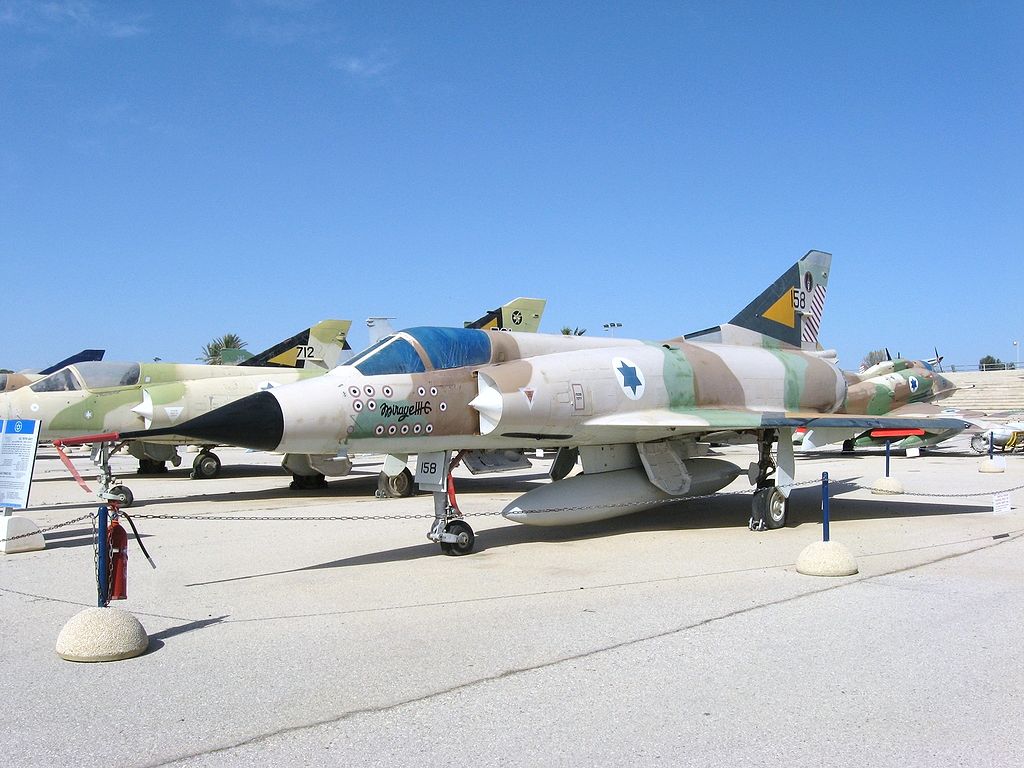‘I called him to ask what was happening. He answered, “It’s fantastic, they are attacking the dummy planes on the old runway! The real planes, which had been hidden under cover, weren’t attacked. None of these were hit during the first two attacks,’” EAF MiG pilot Tahir Zaki’s phone conversation with Wg Cdr Mamdouh Taliba
The Israeli attack on four Arab air groups on June 5, 1967, known as “Operation Moked” (“Focus”), has essentially already been covered in great detail. One of history’s most lauded and successful military missions was this one. Simply put: that fateful morning’s “pre-emptive” Israeli onslaught on Egyptian airfields in Sinai, on the Suez Canal, and elsewhere destroyed the UARAF’s fighting capacity (United Arab Republic Air Force, designation of Egyptian and Syrian air forces between 1958 and 1962, and of the Egyptian Air Force until 1969). The IDF/AF also defeated Egyptian resistance by maintaining multiple strike waves over important enemy airfields for most of the day.
According to Tom Cooper and David Nicolle in their book Arab MiGs, Volume 1, on June 5, 1967, six MiG-15s and MiG-17s were flying above Egypt early in the morning. At daybreak, two MiG-17s from No.18 Squadron conducted a CAP above Israel’s border. At least two MiG-15s departed for a training operation at 8:00 a.m. from one of the Suez Canal airfields that were unhindered by the early-morning fog.
El-Arish AB was the target of rocket and cannon fire from Israeli fighter planes at around 08:45 local time. The attack by the Ouragans was so unexpected that the majority of the MiG-17s of the No. 18 Squadron were destroyed before their crews could even understand what was happening. A MiG pilot for the Egyptian Air Force (EAF) could only draw the following conclusion:
`There was no warning at all. The aircraft at el-Arish were completely wiped out. In the evening of that day, pilots and ground crews were sent back to Cairo.’
Somewhat inaccurately, another EAF MiG pilot, Tahsin Zaki later complained: `It is important to point out that in June 1967, the Israelis attacked el-Arish air-field ten minutes before the rest of our airbases, and that the whole battle could have been different if the commander at el-Arish had contacted Meliz AB via the hotline.’

Other UARAF airfields were not attacked earlier than El-Arish. A formation of Mirage IIICJs hit Bir Thamada at the exact same moment. FM Fawzy (Maj-Gen, Egyptian Army Chief of Staff for Operations) did, however, later offer a potential explanation for why Israel was able to quickly neutralize No.18 Squadron and el-Arish AB. He claimed that the CO el-Arish AB worked for the Israelis for most of the 1960s and divulged all the specifics of his directives to them.
While Kabrit was the center of UARAF MiG-15 and MiG-17 missions at the same time as el-Arish and Bir Thamada, the IDF/AF did not classify Kabrit as a “major target.” However, SMB.2s from No. 105 Squadron, under the command of Yakov Nevo, launched a sustained attack on it. EAF MiG pilot Mustafa Hafez found himself frantically looking for a functioning aircraft to take off and fight back as a result of this causing significant damage:
`I was not actually due to fly that morning. Around 08:20 hrs I was in the mess since I was due to fly later that day. No particular aircraft had been allocated to me since this was normal in our air force. We flew what was available. Suddenly I heard explosions and went outside the mess, and asked people what was going on. Someone said that it must be practiced somewhere. That was when I saw an Israeli aircraft attacking, very low from south to north, coming in towards the runway. It was a Super Mystére.
‘My first instinct was to run towards a ditch, but as soon as I got there I said to myself, “what am I doing here like an idiot?” So I ran to the squadron bus so I could get to the squadron headquarters. There I found the regimental CO. He had previously been my squadron leader at Abu Suweir. His name was Mamdouh Taliba, an excellent man. He was actually heading for his car so I went up to the passenger door. The CO drove to the nearest available aircraft, and I helped strap him in, though we weren’t absolutely sure that this aircraft was ready to go. Just as he was about to close the hood I noticed that the safety pin of the ejector seat was still in, so I pulled it out. I think he took off on a sub-runway as the main runway had already been hit.’
The Israelis were occupied engaging two I1-14s, the aircraft carrying FM Amer (Egyptian Minister of War) and his entourage, which were now flying directly in the middle of their attack, so Wing Commander Mamdouh Taliba and another pilot from No. 31 Squadron were able to launch their attack without being interrupted by SMB.2s. Before the Israeli formation was caught by two MiG-21s and lost two of its own aircraft, both means of transportation were declared as shot down.
Actually, the I1-14 carrying the Iraqi Defense Minister and Egyptian Minister Hussein el-Shafie arrived at Fayid safely before the location first came under attack (and their 11-14 destroyed on the ground). However, after Fayid AB was attacked as well, the aircraft carrying Amer was forced to abort the landing. It turned and crossed over Inchas. Amer gave the pilot the go-ahead to head toward Cairo West after spotting this base on fire. All the time, additional Israeli fighters were flashing by. In the most important phases of the war, the Egyptian military’s Supreme Commander was cut off from his headquarters.
After this initial attack, there was a short break, and Mustafa Hafez continued looking for a serviceable aircraft.

‘Then I tried to find another aircraft. They were all either damaged or being serviced or were not ready to go. Then I went to hangar….’
Around 08:50 hrs., a second attack on Bir Thamada occurred, and the pilots of No. 25 Squadron hurried to take off. A number of them took off as the base was attacked by Ouragans, who claimed to have destroyed six MiGs. The final UARAF jets that attempted to roll for takeoff were less fortunate; both MiG-17s blew up after taking numerous hits from Israeli cannon fire. Nothing comparable occurred at el-Sur; all of the MiG-15bis from the No. 24 Squadron that were still parked there, along with a few MiG-17s from the No. 18 Squadron, were destroyed on the ground.
Meliz AB also managed to scramble numerous MiG-17s despite being hit by Israeli Ouragans at roughly 08:55 hrs. in June 1967 and despite not being a typical MiG-17-base. However, their pilots were instructed to fly toward the direction of the West rather than fighting weaker opponents. With this, the forces of Air Group 2 and 12 consisting of MiG-15 and MiG-17 aircraft stationed in Sinai practically ceased to exist.
In the Canal Zone, the situation on the airfields was getting worse. Around 8:55 a.m., SMB.2s from No. 105 Squadron launched a second attack on Kabrit. The two MiG-17s piloted by Wg Cdr Mamdouh Taliba sighted the Israelis over the base as they were still climbing. The Egyptians tried to escape by turning on their afterburners, but the Israeli formation’s Number 2 first reported damage on a MiG-17’s engine and left wing before claiming that the aircraft had been shot down in a subsequent strike. While the available Egyptian sources dispute any such loss, the commander of the Israeli formation confirmed that this MiG crashed. Mustafa Hafez’s search for an operable aircraft ultimately succeeded as Israeli jets were once more occupied with defying orders and fighting in the air:
‘By this time mechanics started coming back after running away as the first bombs fell. That was when I took off in an available MiG-17F. I didn’t even check if it was armed but only asked if it had been refueled. I took off on a sub-runway. By that time, Mamdouh Taliba landed. I didn’t have any plans, only to try and defend the airfield. Once I was up in the air I could see the smoke from other airfields which had been attacked. I hadn’t even cleared my take-off with the control tower, I just took off. Nor did I have any idea what the rest of the squadron was doing. Then I saw something flying very low. It was a Mirage going west to east, so I half rolled in behind it. It was probably doing a reconnaissance as it was on its own and was not attacking targets on the ground. As I followed it I tried to load [cock] my guns three times, but my MiG- 17 was too slow to keep up and after a while, the Mirage just flew off. Of course, I was angry and frustrated because I was unable to shoot down that Mirage. There was a switch in the cockpit that changed the armament from rockets to guns. And I wasn’t the only pilot to make the same mistake. Hisham Said Abdu, who was another instructor, did the same thing.
‘Almost immediately after that, I saw something else very low with a long exhaust of smoke. It crashed into the Suez Canal. I thought it might have been one of my colleagues but in fact, it was probably a SAM. Then, I landed safely. Another of our pilots tried to take off using the main runway but hit some bomb damage which damaged his aircraft so that he had to eject while still on the ground. He survived but he was very lucky because the minimum height for ejecting was supposed to be 250 meters. His name was Muhammad al-Hadidi. This happened after I had landed.’
The attack on Cairo West, a significant UARAF MiG-17 base, was likely carried out using the Mirage Hafez that was trying to launch the attack. A formation from No. 101 Squadron IDF/AF attacked the airfield at precisely 9:00 a.m., claiming strikes on at least three MiG-17 aircraft. However, a few MiGs were still flying because Wg Cdr Zohair Shalabi scrambled with two wingmen right away. Helwan AB in order to scatter his aircraft after spending some time on a CAP. He arrived there at around 09:30 hrs.
The UARAF pilots at Bir Thamada thought they had been under attack continuously for 15 minutes since they had been hit three times in quick succession. Around 9:00 a.m., the final intact MiG-17 on the ground was destroyed by Mystéres of No. 109 Squadron, marking the end of the airfield’s use as a fighter base. Flight Lieutenant Hashim Mustafa Hassan of the No. 25 Squadron reported the peculiar circumstance that emerged only a short while later when another Israeli formation flew overhead:
`Some 30 seconds from the end of the attack, a second wave of planes arrived… We ran about the desert, looking for cover, but the planes didn’t shoot. They merely circled, their pilots surprised that the base was completely destroyed and that no targets remained. We were the only targets… weak humans scurrying in the desert with handguns as our only means of self-defense. It was a sad comedy… pilots of the newest and best-equipped jets fighting with handguns. Five minutes after the beginning of the attack, the planes disappeared and silence prevailed that encompassed the desert and the noise that destroyed our planes and the airbase, and the squadron. They completed their assignment in the best way possible, with a ratio of losses —100 percent for us, 0 percent for them.’
The third Israeli attack on Kabrit occurred around 9:10 a.m., and then another one occurred at 9:25 a.m. This time, up to 18 MiG-15s and MiG-17s were reportedly destroyed on the ground by Super Mystére B.2s of No. 105 Squadron and Mystére IVAs of No. 109 Squadron IDF/AF, increasing the total to 30 since the war started. However, Wg Cdr Mamdouh Taliba stated a completely different scenario when MiG pilot Tahir Zaki called him, sometimes after 9:00 a.m. local time, suggesting that their statements were probably certainly exaggerated:
‘I called him to ask what was happening. He answered, “It’s fantastic, they are attacking the dummy planes on the old runway! The real planes, which had been hidden undercover, weren’t attacked. None of these were hit during the first two attacks. But there were about eight or nine open pens and these had one aircraft in each of them. Some of these were attacked.” These were the only real planes that the Israelis attacked. We also had very big hangars at Kabrit, so we put four MiG-17s in each, one in each corner of the hangar where they were less likely to be hit. And they weren’t.’
The Israelis, on the other hand, only acknowledged being duped by Egypt’s dummy planes at Abu Suweir and Cairo West because they thought the majority of them were constructed of inflatable rubber rather than wood.
However, Mustafa Hafez was forced to flee under the most hazardous conditions a second time following the subsequent attack on Kabrit:

`Very soon afterward I took off again in a different aircraft. This was a MiG- 17PF [serial number 2803]. There had been no time for me to report or to be debriefed. I merely changed aircraft. As I started the engine the airfield came under attack again, perhaps it was the second or third attack. I was still inside the hanger, in the cockpit, when I heard the attack. I cleared the hanger doors at full throttle and afterburner. The aircraft was swerving and rocking from side to side as I turned, first to the left to clear another hanger which was facing my hanger, then to the right along a taxiway, then to the left again to cross a small railway line that ran between the hangers and the main sub-runway, then sharp right onto that sub-runway. I was afraid the wingtips would hit the ground. I took off without a pause and climbed as steep as I could, but the enemy had gone. Taliba had also taken off during the attack.’
Wg Cdr Taliba joined Hafez once they were in the air, and the two formed a CAP over Kabrit. They remained in the air until approximately the time of the sixth Israeli raid on Kabrit, which occurred at around 09:40 hrs.
‘He [Taliba] joined me and told me to accompany him as his Number Two (wingman). As I was joining him I saw a SAM coming towards us. We avoided it but Taliba ordered me to land as I only had 450 liters of fuel left. Taliba had landed and I was on my final approach at a height of about 15 to 20 meters when Taliba shouted over the radio, “Hafez! You have aircraft ahead of you!” So I retracted my undercarriage and flap, gave the aircraft full throttle and afterburner. The Israelis were about 100 meters ahead of me. I counted them, one, two, three, four; so I pulled up and tried to follow the last one. But this meant leaving the turn a bit late. I should have turned earlier. The Israelis were a bit lower than me. All five of us started circling, then one came at me head-on and opened fire. This made me so angry that I swore out loud. The Israeli turned to the right. I turned first to the left and then to the right to try and follow him. A head-on attack is very difficult.
‘That was when I was hit in the right wing. We were all flying at about 200 or 300 meters. My right aileron was damaged and I continued turning right, unable to straighten out, so I gained height. The Israeli couldn’t keep with me as a MiG-17 is better in a climb. My aircraft juddered several times and almost went into a spin. I thought it odd that it tried to spin under those conditions [this was perhaps when his aircraft was hit a second time, in the tail and rear fuselage]. While three of the Israeli aircraft attacked our airfield, the fourth one followed me. After the three have strafed the field, the fourth one did the same, then they all flew home.
Meanwhile, I was still turning to the right, unable to straighten up. As I lined up on a runway I used the aileron trim to straighten out. This wasn’t standard procedure. I don’t know if I invented it or maybe it just came by instinct, but it worked. I had no communication with the ground, but I landed OK. The MiG had been badly damaged. The right wing was damaged, the lower part of the rudder had mostly been shot away, the main control rod to the stabilizer was much damaged. The rear fuel tank had also been hit but fortunately, it had been almost empty, and although there had been a fire in the tank, and the alarm had been set off in my cockpit, I had used the fire extinguisher and this did the trick as there hadn’t been enough fuel to cause a big fire.’
Despite the fact that no Israelis witnessed Mustafa Hafez’s MiG-17 really crash, Major Asaf Ben-Nun of No. 105 Squadron claimed a kill. It’s interesting to note that the Israeli Air Force has never “verified” any other IDF/AF pilot’s claim to have shot down an Egyptian MiG-17 on the first day of the 1967 War. Given that the UARAF did not lose a single MiG-17 in an air battle on June 5, 1967, the precise reasoning behind this Israeli decision is still unknown.

The Israelis expanded their efforts to include the Jordanian, Syrian, and Iraqi fronts after being encouraged by this accomplishment. They completely destroyed the Royal Jordanian Air Force (RJAF) in a matter of hours before inflicting such heavy losses on the Syrian Arab Air Force (SyAAF) that the latter thereafter played essentially no active role in the conflict. No operation in history compares to the IDF/AF attack on that day in terms of effectiveness and significance for the success of the entire conflict and the future of the Middle East.
Photo by Francesco Gasparetti from Senigallia, Italy and Oren Rozen via Wikipedia


